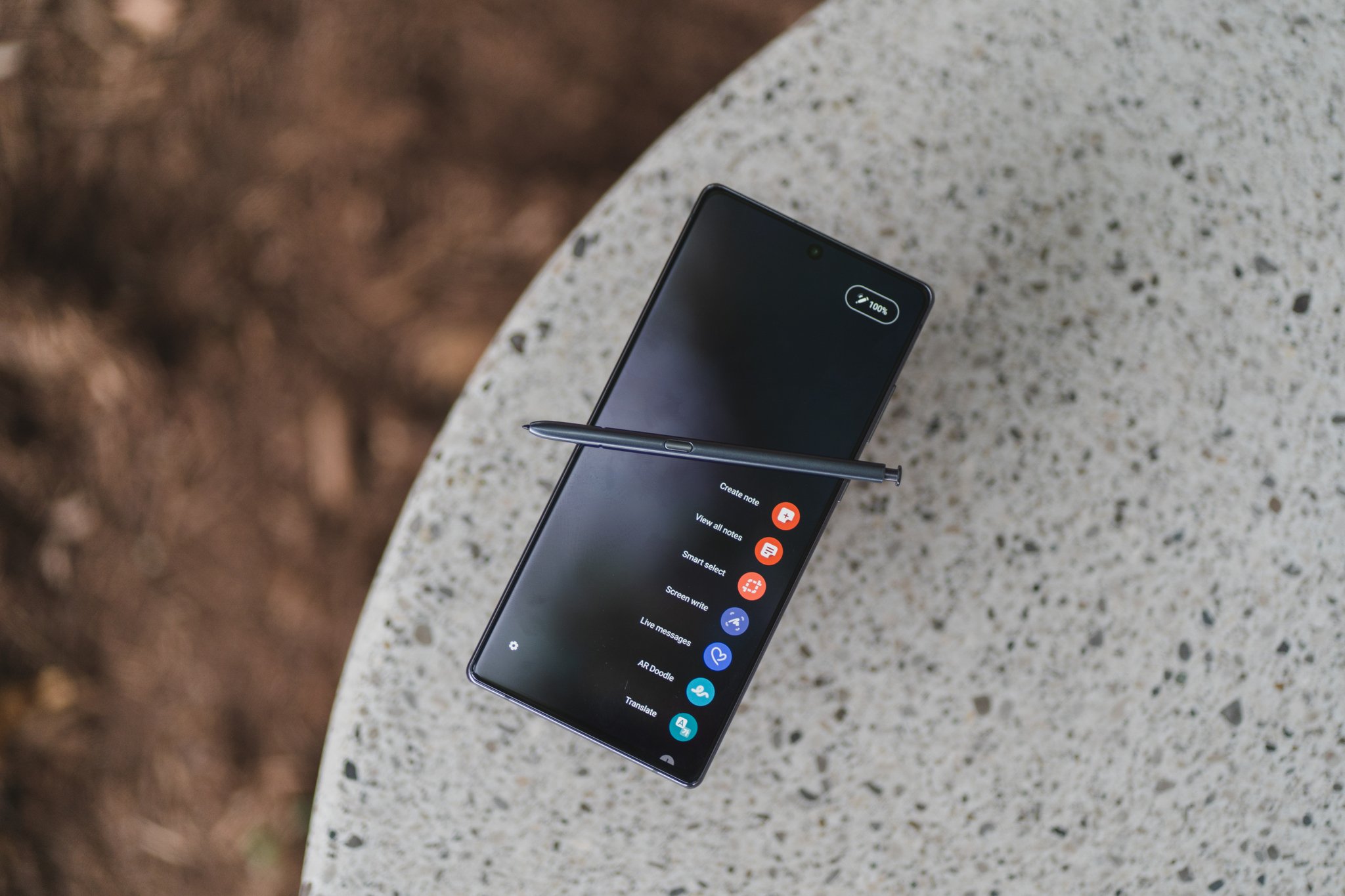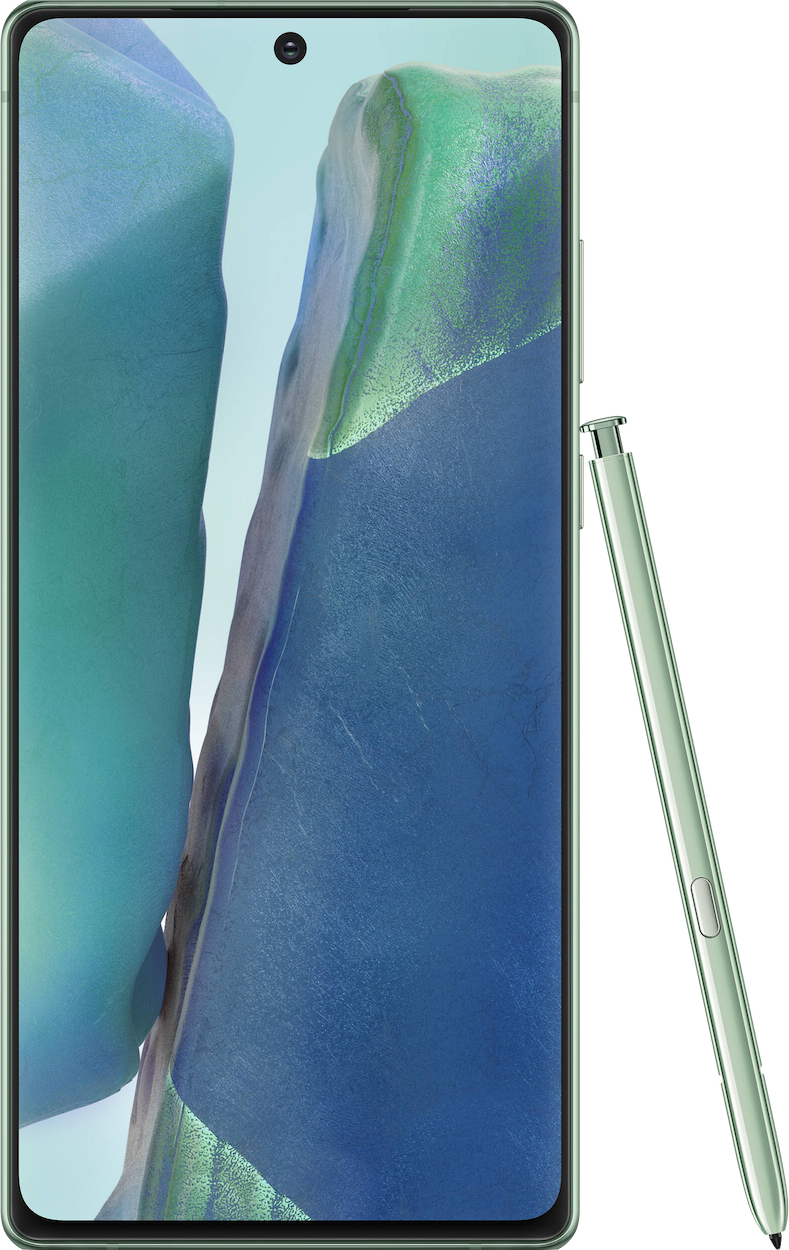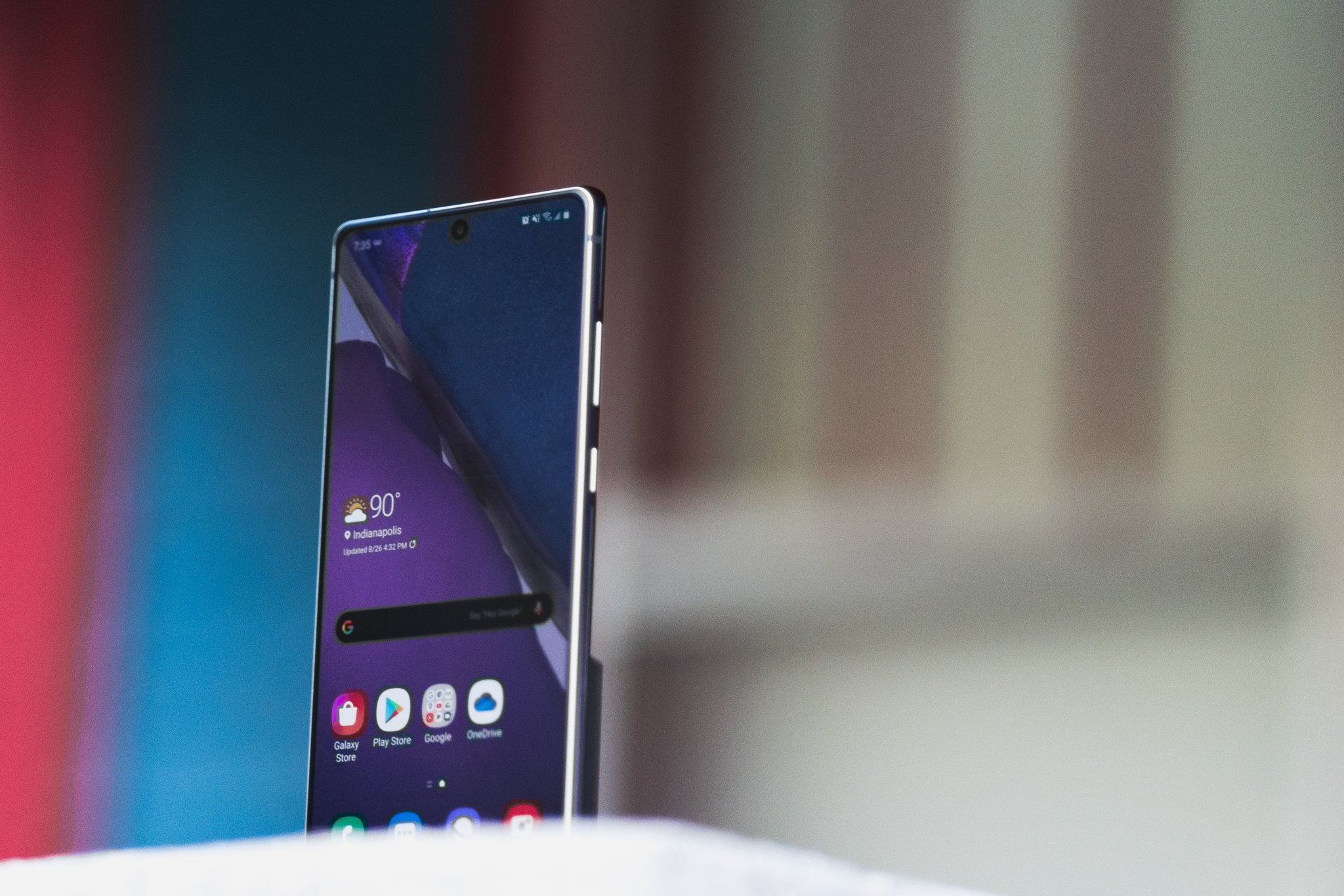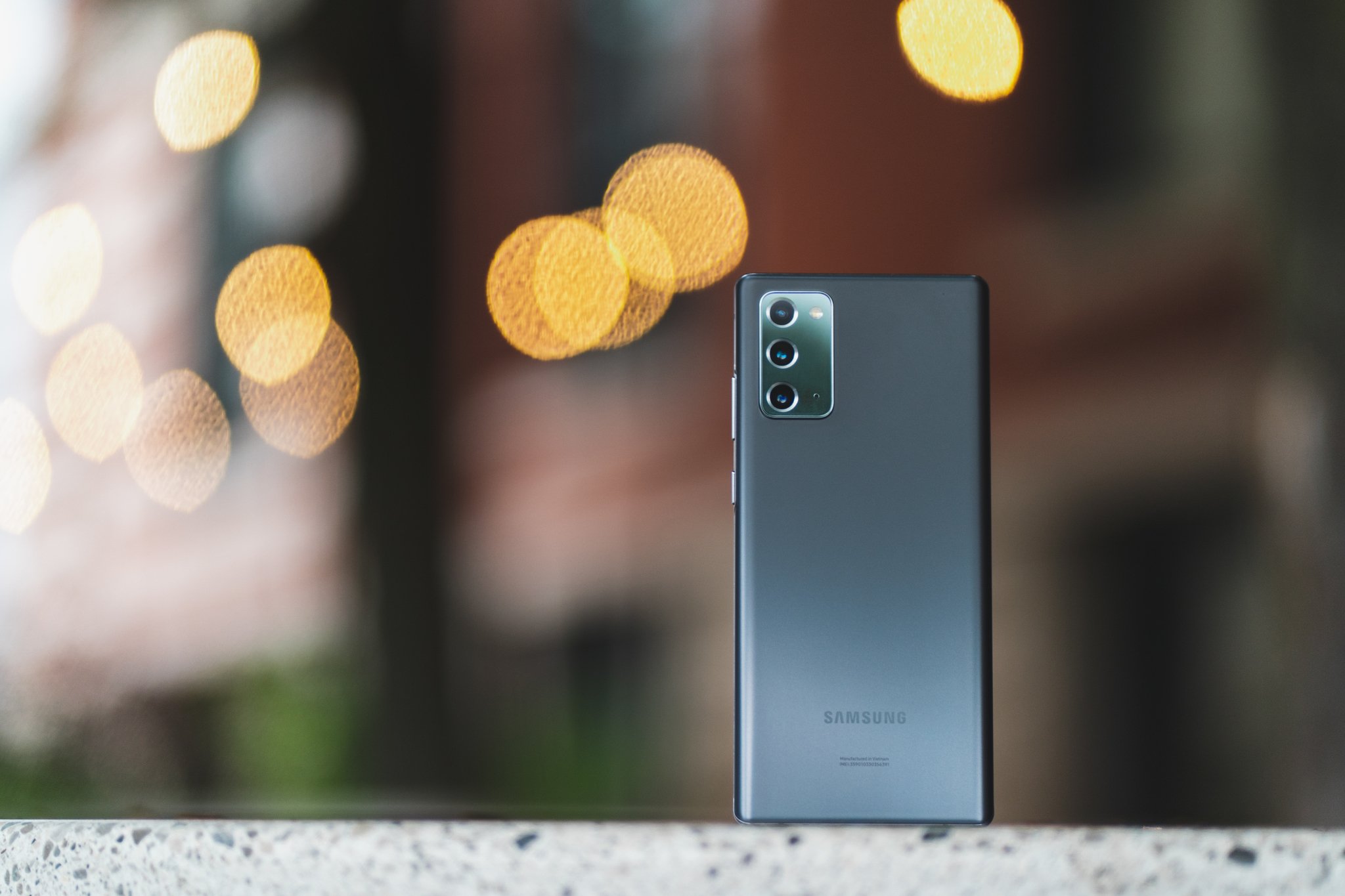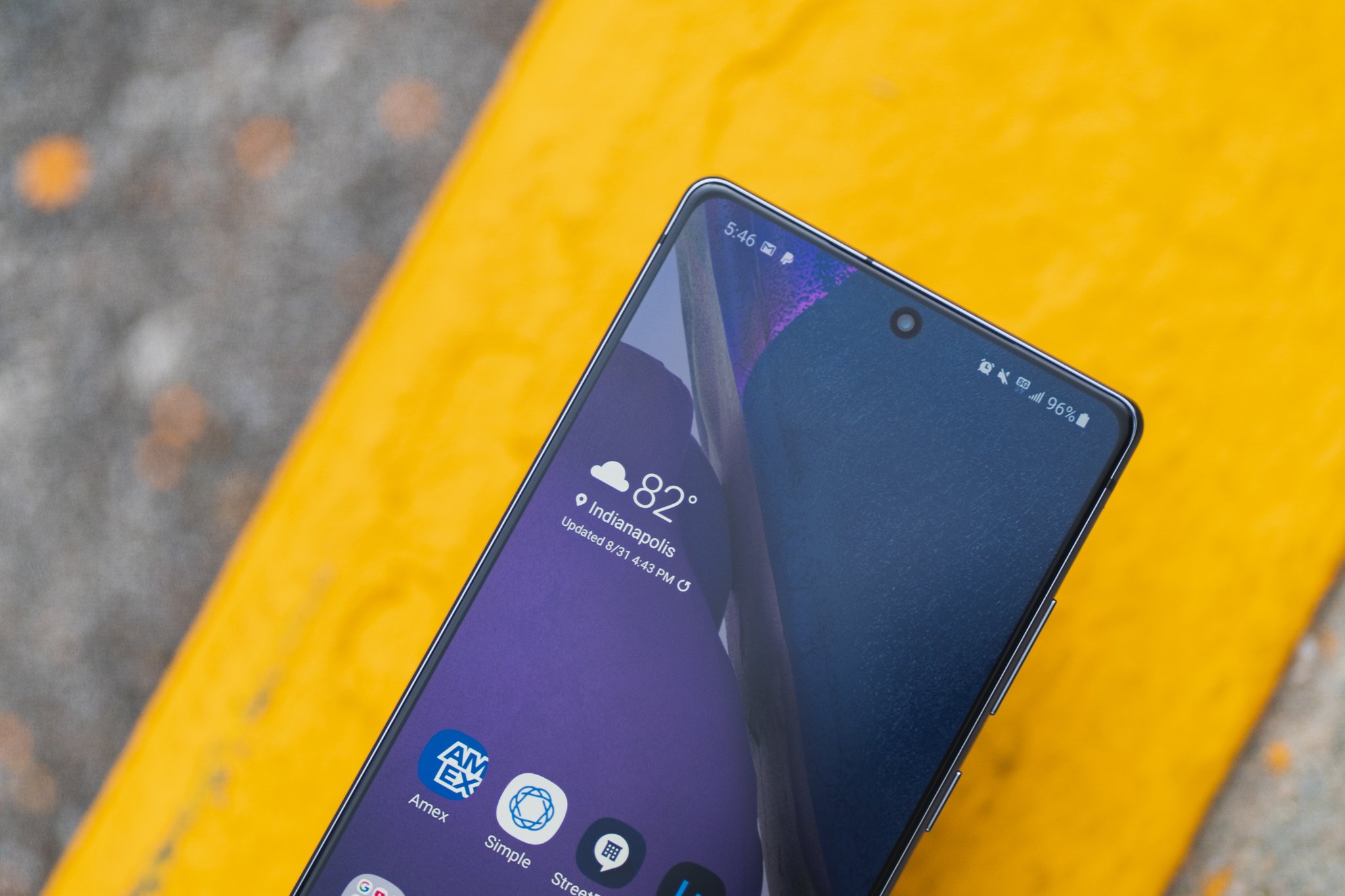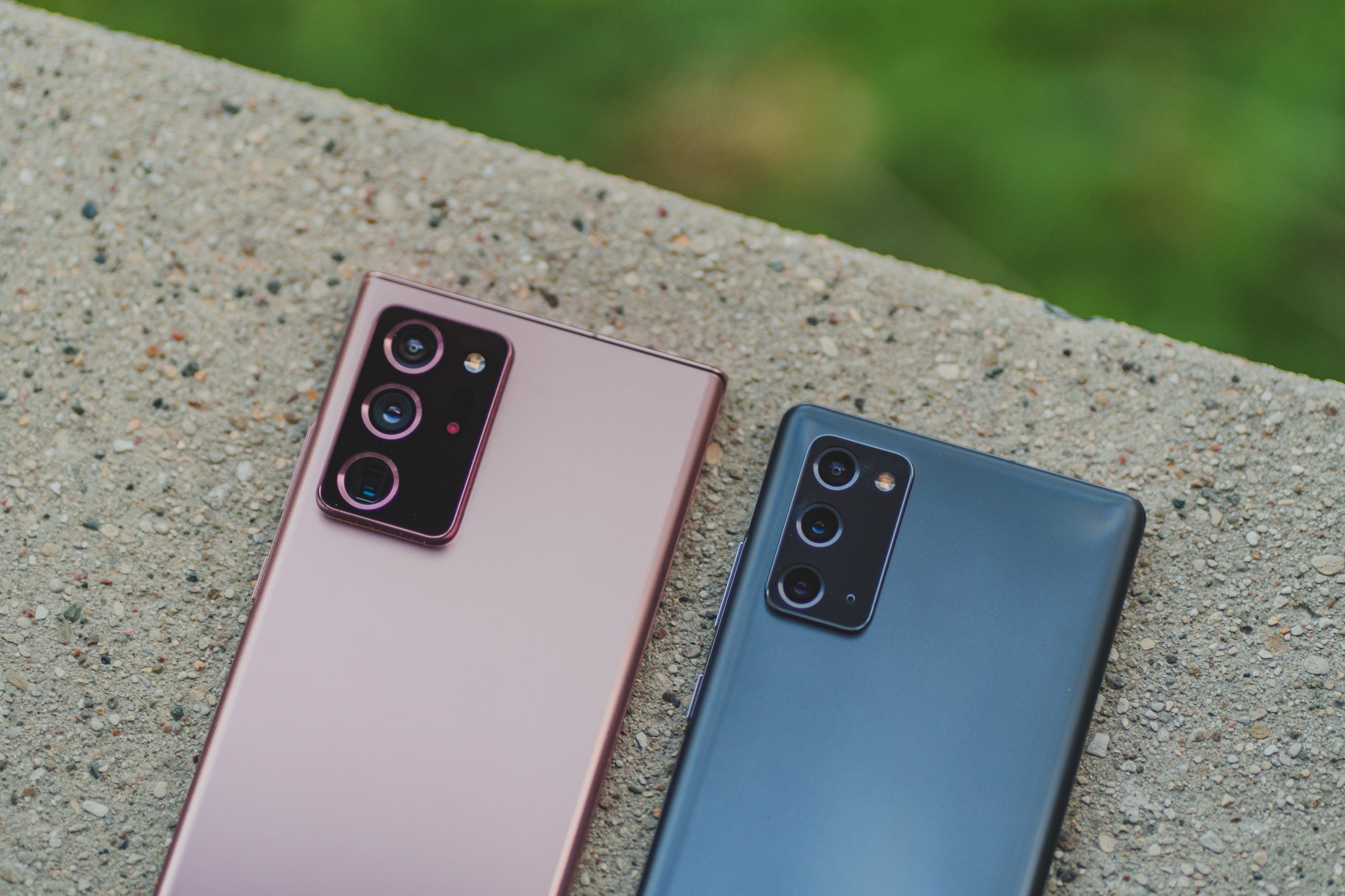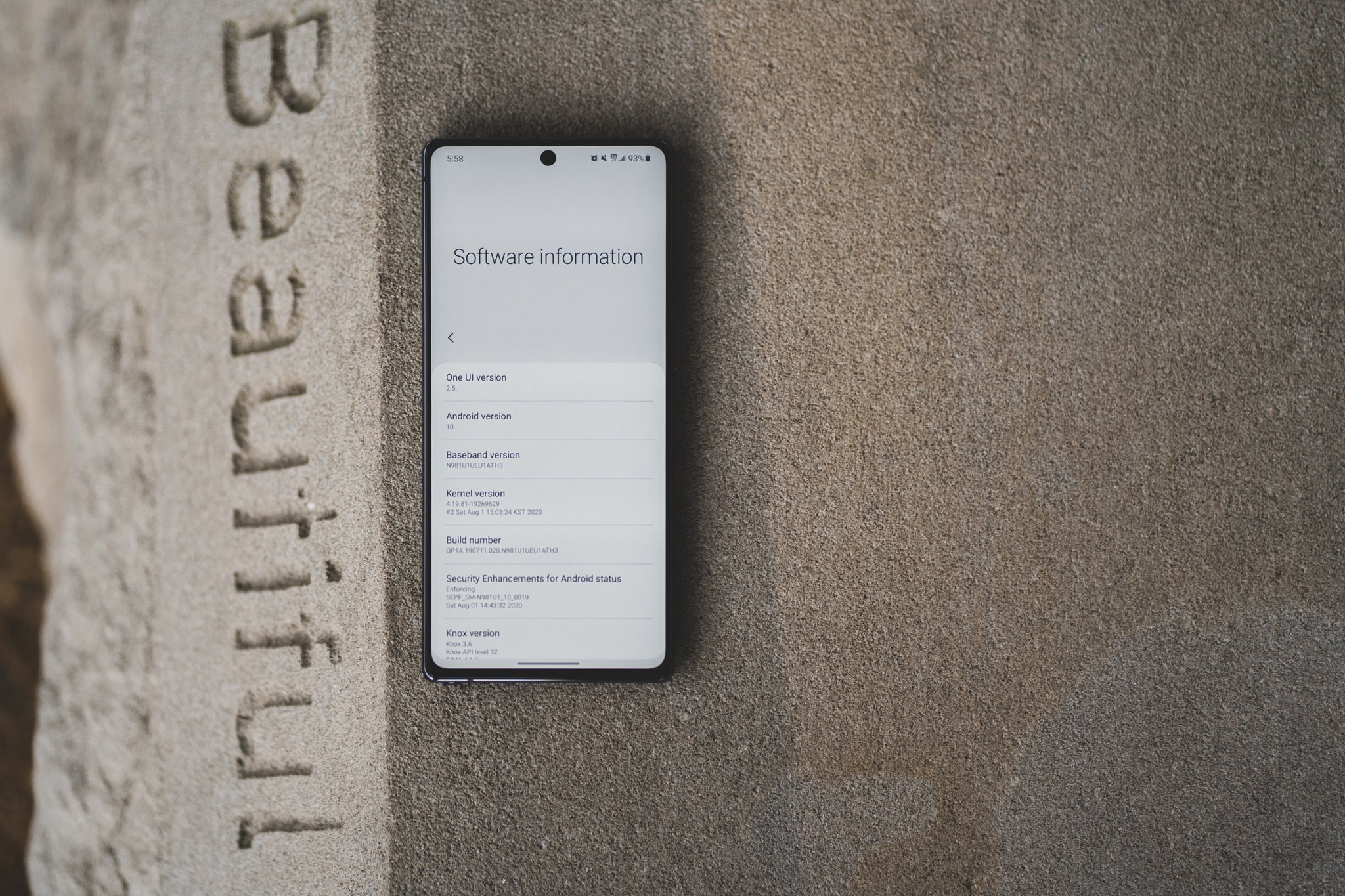Samsung's most misunderstood phone of the year caught me by surprise.
The Galaxy Note 20 is one of Samsung's most perplexing devices in years. It has most of the modern appointments of a 2020 flagship, including 5G support, a top-of-the-line processor, and a trio of high-quality cameras, but it also ditches the luxe glass backing of its Ultra counterpart in favor of a plastic one, and features a relatively dated 60Hz 1080p display.
On paper, these compromises can make the Note 20 seem like a hard sell compared to the Ultra, especially given the abundance of comparably high-end options like the OnePlus 8 Pro at lower price points. But in my time with the Galaxy Note 20, I've come to appreciate it as a more practical device than even the pricier Note 20 Ultra that I used just before it. As it turns out, those hardware tradeoffs aren't so bad.
Samsung Galaxy Note 20
Bottom line: Despite a number of hardware compromises compared to the Note 20 Ultra, the Galaxy Note 20 is a surprisingly great phone with versatile cameras and all-day battery life.
The Good
- No accidental touch input on the flat display
- Excellent battery life
- Impressive camera performance
- Promised three years of software updates
- One UI 2.5 introduces useful features like Wireless DeX
The Bad
- No Super Resolution Zoom
- No expandable storage
- Display is limited to 1080p and 60Hz
Samsung Galaxy Note 20: Price and release date
The Galaxy Note 20 launched on August 21 for $999.99, with a single configuration featuring 128GB of storage and 8GB of RAM. Since then, the Note 20 has already seen discounts bringing it to around $800 through most retailers. If you already have a relatively recent device to trade in, Samsung is offering massive trade-in credits through its site, knocking up to $650 off of the Note 20's total cost.
You can pick up a Note 20 in Mystic Gray, Mystic Green, or Mystic Bronze. I personally don't think you can go wrong with any of the color options, but I'm a fan of the Mystic Green and Mystic Bronze finishes in particular — though it's easy to appreciate the understated look of the Mystic Gray review unit I was sent.
Samsung Galaxy Note 20: What I like
It's easy to get caught up in the debate around Samsung's decision to use a plastic backing on the Note 20, but I was surprised by how solid the phone still feels in the hand. There's the slightest bit of give in the plastic if you apply enough pressure, but the Note 20 doesn't creak or feel at all cheap, and the matte finish feels reminiscent of the frosted glass on the Mystic Bronze Note 20 Ultra. In case you're worried about long-term durability, the Galaxy Note 20 also has an aluminum midframe.
The flat display is a fantastic change of pace for Samsung's high-end lineup.
The plastic design also helps the Note 20 feel a bit lighter than the Note 20 Ultra, and while the rounded corners are a bit odd to see on a Galaxy Note device (most of which feature a more squared-off look), they keep the phone from poking uncomfortably into your hand.
By far the thing I was most excited to try on the Galaxy Note 20 was its completely flat display — something that's otherwise been phased out of Samsung's high-end lineup. After encountering far too many accidental touches on the Note 20 Ultra's curved glass, I was curious to see how this screen would fare by comparison.
To my delight, accidental touch input hasn't been an issue whatsoever on the Note 20. It's really made me think about how unnecessary curved displays still feel at times; they certainly feel look and feel nice, but I'm still not convinced they bring much functional benefit to the table. I'd be happy to see more flat displays on future Galaxy S and Note devices.
Of course, in typical Samsung fashion, the quality of the display is excellent, as well. The Galaxy Note 20 uses a Super AMOLED Plus panel with rich colors, great daylight visibility, and a low enough minimum setting to use comfortably at night. It isn't perfect — more on that in a little bit — but there's still plenty to love here.
I've also been impressed with the Note 20's battery life. The 4300mAh battery is only marginally smaller than the Note 20 Ultra's 4500mAh cell, but between the display's smaller size, lower resolution, and lower refresh rate, I've been able to hit all the way up to 7 hours of screen-on time with ease, ending most days with around 30% battery life remaining.
Samsung recently committed to offering three years of software updates to many of its phones, including the Galaxy Note 20. That means it should be running the latest version of Android through at least 2022 — in the meantime, that's Android 10 with One UI 2.5, which comes with some fantastic new features like Wireless DeX and the ability to control the direction of your microphones while shooting video.
On the camera side, you don't get the Note 20 Ultra's enormous 108MP camera or periscope-style telephoto lens, but the Note 20's imaging is nothing to scoff at. The main camera uses a 12MP sensor that's larger than the one on last year's Galaxy Note 10 at 1.8 microns, which helps it take in more light and perform better in dark situations.
Elsewhere, you get a 12MP 1.4-micron ultra-wide sensor, and a 64MP 0.8-micron telephoto sensor with 3X Hybrid Optic Zoom that can be pushed up to 30X through digital zoom. Of course, that pales in comparison to the Note 20 Ultra's 50X zoom, or the S20 Ultra's 100X, and in my experience the Note 20's telephoto sensor only retains a useful amount of detail up to about 10X. Still, I've been overall impressed with the Note 20's cameras, a marked improvement over the Note 10's.
Samsung Galaxy Note 20: What's not so great
Let's talk about some of the more polarizing traits of the Galaxy Note 20, most of which center around the hardware. Its display, while terrific in most other ways, is limited to just 1080p at 60Hz. That's not necessarily a huge deal at first glance; I loved the Note 10's display last year, which featured the same specs, and even Samsung's 120Hz-capable devices force you down to 1080p to take advantage of that higher refresh rate.
But during Samsung's Unpacked event last month, the company made a huge deal about how beneficial the Note 20 Ultra's 120Hz refresh rate is when it comes to reducing latency on the S Pen, making writing and drawing on the screen feel closer to a real pen-and-paper experience than ever.
Of course, it makes perfect sense that the Ultra would have higher-end features than the standard Note 20 — it's more expensive, after all — but when even the similarly priced Galaxy S20 released back in March can reach 120Hz, it feels like the Note 20 got the short end of the stick.
The spec sheet is also a bit thinner than on the Note 20 Ultra. There's a single configuration available, with 256GB of storage and 8GB of RAM. I think both specs are perfectly fine for most users, but this continues last year's trend of bisecting a brand name that was once synonymous with the ultimate smartphone experience. The Galaxy Note 20 is a more accessible Note meant to reach a broader audience — and that's okay.
Samsung Galaxy Note 20: The competition
Without a doubt, the Galaxy Note 20's biggest competition is its pricier sibling, the Note 20 Ultra. For an extra $300, you get more RAM, a larger Quad HD+ display with a 120Hz variable refresh rate, more powerful cameras, a slightly larger battery, expandable storage, and the same great One UI 2.5 software based around Android 10. I like the Galaxy Note 20 a lot more than I had originally expected, but if you're a traditional Note fan that wants the very best of the best, the Note 20 Ultra is likely a better fit.
Outside of Samsung's own catalog, the OnePlus 8 Pro is one of my favorite handsets of the last year, with a Snapdragon 865 processor, a gorgeous 120Hz display capable of running at 1440p, a matte frosted glass back, and the company's OxygenOS software, which continues to be my favorite implementation of Android — all for around the same price as the Note 20.
When it initially launched, the Note 20 retailed for $1,000, which made it an even harder sell against these alternatives. But in just the short weeks since it launched, the Note 20 is already on sale for just $800, and that makes it a far more compelling option — even compared to the newly announced Galaxy S20 Fan Edition.
Samsung Galaxy Note 20: Should you buy it?
You should buy this if ...
You want the S Pen without the Ultra price tag
The Galaxy Note 20's obvious advantage over alternatives like the OnePlus 8 Pro and Galaxy S20 is its S Pen, which can be used for everything from quick sketches to notetaking, signing legal documents, and even acting as a remote shutter for the phone's cameras. 120Hz aside, this is the exact same S Pen experience you'd get on the Note 20 Ultra, without the eye-watering $1300 price tag.
You want all-day battery life
While it's a bit of a bummer that the Note 20 is limited to just 1080p and 60Hz, those limitations also cut down on battery drain. The Galaxy Note 20 is able to last even longer than the Note 20 Ultra, despite a slightly smaller battery, and I've easily managed days with over 7 hours of screen-on time. The Note 20 is an absolute battery champ.
You're not a fan of curved displays
Curved displays look and feel nice, but they're functionally little more than eye candy. After running into a frustrating amount of accidental touches on the Note 20 Ultra, it was a relief to move to the Note 20's flat display — which comes with the added bonus of being a bit less fragile in the event of a drop.
You should not buy this if ...
You want Samsung's very best phone
The Galaxy Note 20 is great, but you'll still get more out of the Note 20 Ultra if you're willing to spend the extra money. The Ultra's extra 4GB of RAM can definitely come in handy if you're a frequent multitasker, and the 120Hz variable refresh rate makes for a smoother-looking experience that doesn't take too much of a toll on battery life.
You want to take pictures from across the town
The Galaxy Note 20 manages to push its 3X Hybrid Optic Zoom telephoto sensor to an impressive 30X, but the image quality starts to quickly deteriorate beyond 10X. Meanwhile, the Galaxy Note 20 Ultra can reach all the way up to 50X, and the S20 Ultra goes even further with a maximum 100X zoom. You won't necessarily want to post those shots to Instagram, but that sort of range can be useful for reading distant signs and even taking photos from an airplane window.
The Galaxy Note 20 really surprised me. Going into it, I wasn't sure how to feel about the plastic design and 60Hz display on a 2020 flagship release. But as it turns out, the phone still feels extremely well-made, and that lower refresh rate brings with it some superb battery life. It may actually be one of the best Android phones available today. None of the Note 20's compromises are deal-breakers for anyone but the most discerning of buyers, who should, of course, get the Note 20 Ultra instead.
If the price still scares you off, though, Samsung is offering high trade-in values for quite a few older devices, which could bring the Note 20 down to as low as $350 — at which point it's an absolute steal. No matter what price you pay, I think you'll be happy with the Note 20 for the next few years, especially if Samsung holds true on its promise to keep the phone up to date along the way.
Samsung Galaxy Note 20
